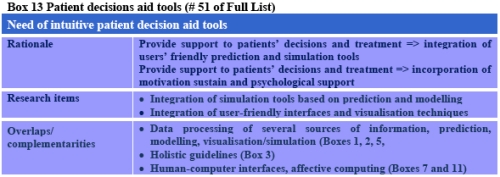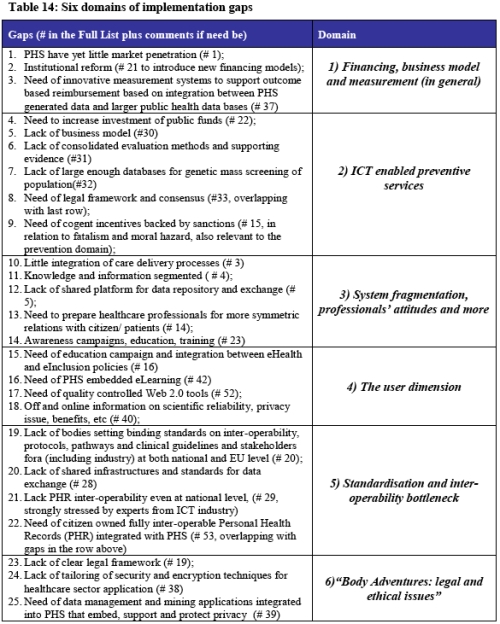The European Union (EU) is struggling with many of the same healthcare issues as the US, aging population, ever increasing costs of care and the need to move to new modalities of care. This is one of the key take-aways from a recent EU-sponsored report: Reconstructing the Whole: Present and Future of Personal Health Systems. This report looks at the present state of Personal Health Systems (PHS), assesses gaps (technology, process & culture) and lays out what is required to meet the “promise of PHS” by the year 2020.
The report takes a very broad brush to what is PHS including IT, sensors, diagnostics, and drug development (personalized). This is a big report at some 240pgs and unfortunately is one of those reports that is all too big and all too academic to be useful to the average healthcare wonk. But tucked within this future, sitting-on-the-bookshelf and collecting dust report are a couple of tidbits worth mentioning.
On pages 79-86 are a series of gap analysis tables (20 in all) addressing a wide range of areas associated with PHS. Below is the Table addressing Patient Decision Aid Tools.
While the above gap analysis tables are instructive, they are not terribly “deep” and at times come across as superficial – thus would make good fodder for a “high-level” presentation to a less informed audience.
Arguably the best Table is found towards the end of the report titled: Six Domains of Implementation Gaps.
The table clearly lays out what are the future challenges to broader adoption and use of PHS. The key take-away here is the surprising similarity between the US and its EU counterparts in the deployment and use of PHS, despite what are very different healthcare system models. Which raises the question: Will such uber-players in the Personal Health Platforms (PHP) market, e.g., Dossia, Google Health and HealthVault create the systems and platforms required to support PHS data requirements? HealthVault’s move into international markets, (Canada and Thailand) signal yes, but will providers, payers and ultimately consumers join in?
Still more questions then answers at this early juncture in the development of consumer-focused systems and platforms. But there is a ray of hope in the global commonality of challenges faced that will lead to increasing attention and subsequently resources dedicated to bridging the gaps, addressing these challenges to create more effective and efficient care delivery models.
Possibly related posts: (automatically generated)
Chillmark Research does some very nice digging for useful learnings to be gleaned from an EU-sponsored report on the present and future of personal health systems. The second chart in particular does a great job of outlining the barriers to the establishment of a wholly unified personal health system.


No comments:
Post a Comment